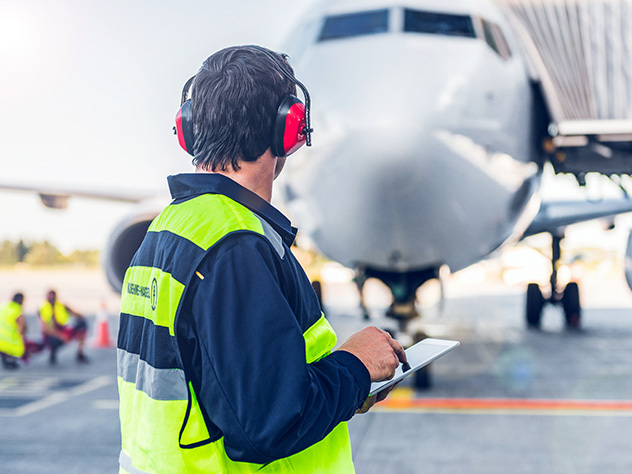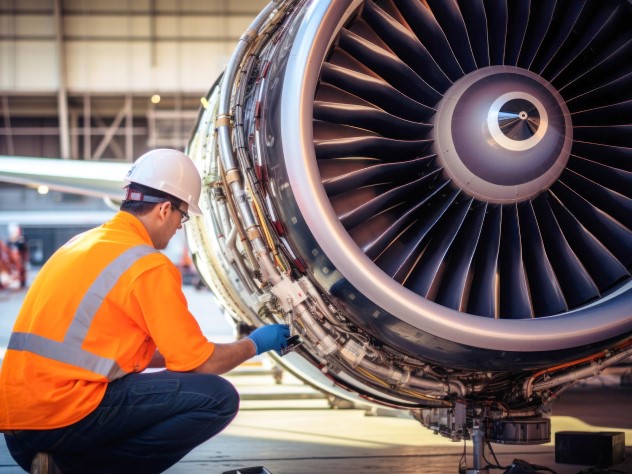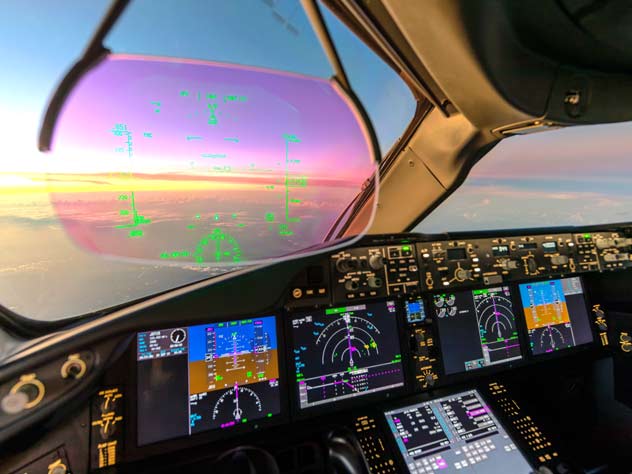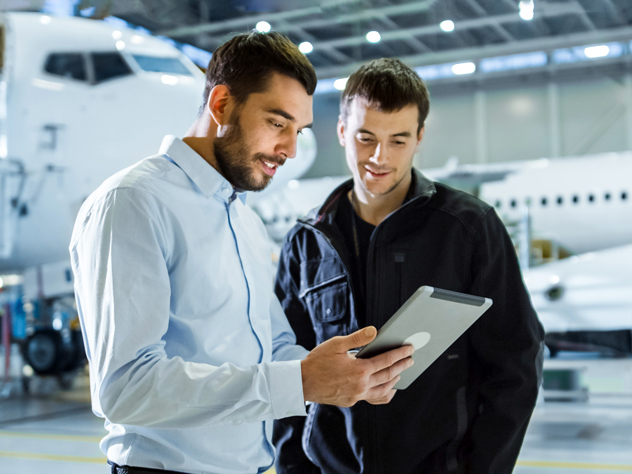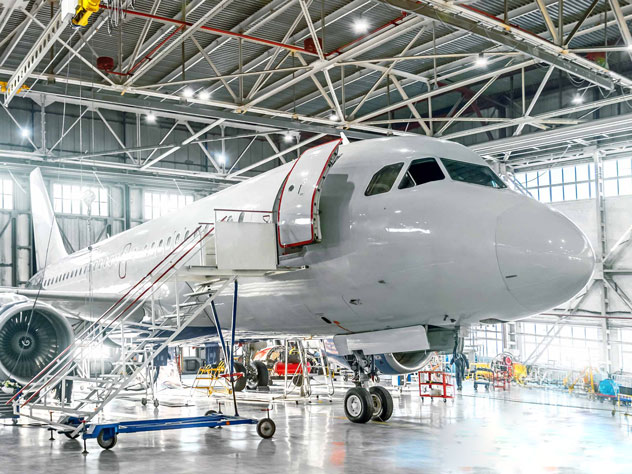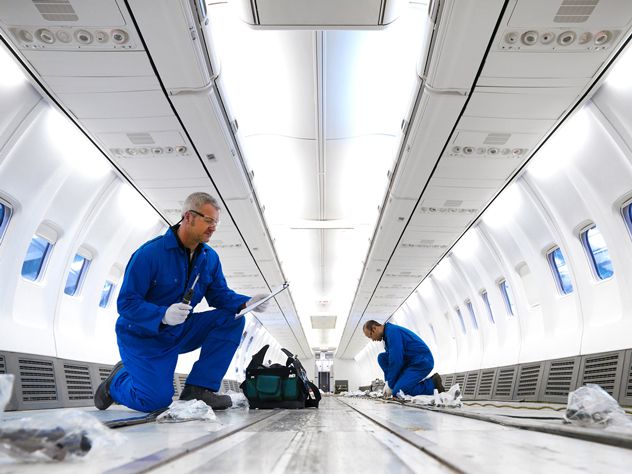The COVID-19 pandemic has significantly affected the aerospace industry overall and the cargo market specifically. For the aerospace industry and airlines, “cargo is king” because it creates opportunities for revenue and growth. The number of full freighters will increase and result in more passenger to freighter conversions (P2F). Furthermore, the passenger decks of aircraft are being used for cargo, resulting in the so-called passenger freighters or “preighters”. Is this temporary? Will it be enough to match the demand?
In a recent ISTAT Learning Lab, Erik Goedhart, SVP and Global Head of Aerospace at Kuehne+Nagel, shared valuable insights about this emerging trend. “It was a great opportunity to discuss this topic,” Erik says, “it often feels like every day of the past year has been a learning lab!”
A changing environment
More than 10,000 aircraft out of a global fleet of 35,000 are currently parked or stored. It is estimated that belly cargo capacity on wide-body aircraft will not be back at pre-COVID levels before 2024. Passenger deck cargo is highly labour intensive and puts pressure on rates. However, the market is demanding. The e-commerce logistics sector is growing quickly and the sea freight market is highly congested. This results in additional demand for air cargo.
Companies are evaluating their future positions in the supply chain. All aspects of Porter’s “Five Forces” model are seen, including forward and backward integration and new penetrants. Industry roles are blurring, with customers becoming suppliers and/or even competitors. Business travel will be different after COVID and new aircraft ranges such as the narrow-body long haul travel will enter the market. This will also affect belly cargo capacity.
Connecting the dots
These industry dynamics form the basis for Kuehne+Nagel to connect the dots between two related roles. The first role being Kuehne+Nagel as a leading air cargo provider and customer of cargo airlines, and the other role as a leading aerospace logistics provider serving OEMs, vendors, leasing companies, airlines and MROs. Through these connected roles, we have a comprehensive understanding of the future cargo market and the conversions required.
Freighters: When does conversion make sense?
An aircraft’s current market value (CMV) is a good measurement of whether conversion makes financial sense. As a rule of thumb, the target price of a 20-year old converted freighter is 25-30% of the price of a new freighter. Based on estimations from ISHKA, there has been a large drop in the CMV of many aircraft between January 2020 and January 2021. Narrow-body craft are down 15-30% with wide-body craft down 20-45%.
Besides the cost and time of conversion, regulation is crucial. From a regulatory standpoint, all aircraft conversions need a supplementary type certificate (STC). The type certificate (TC) is the “driver’s license” of the aircraft and any change to that require an STC which involves a lot of paperwork and approvals. The most common STCs are for the Boeing 737, 757 and 767 – and the Airbus 330 and 320 series. Recently, the Airbus 321 P2F started operation resulting in a unique competitive positioning of operation cost, capacity and carbon offset potential. The Boeing 777-300 ERSF is an upcoming game-changer.
How does Kuehne+Nagel facilitate?
Once the STC certification process is complete, P2F conversions can take from 6 weeks to many months. The pressure from customers is to get the aircraft out of conversion in order to operate, fly cargo and generate revenue. The logistics and supply chain backbone of a conversion is the differentiator that can improve lead times and minimize risk.
To address the growing demand for P2F conversions, Kuehne+Nagel has created a dedicated solution. Many conversions are delayed because of the late delivery of parts, causing budget blowouts and loss of revenue for the owners of these assets. Kuehne+Nagel establishes affordable and reliable ways to transport these supplies while ensuring you meet your lead times.
Once the conversion configuration, time and place are agreed upon, Kuehne+Nagel manages all vendor relations for customers. We also ensure the shipset of components arrive on time and are delivered next to the aircraft in the conversion facility. As the shipset includes complex and heavy components (a cargo door weighs over 600 kg), the partnership can lead to significantly reduced cost with increased reliability.
Due to the current lack of conversion lines, parties are opening additional lines in various locations around the world. Companies that have global supply chain visibility across their locations will enjoy additional competitive advantages. Kuehne+Nagel’s fully digitized material flow includes visibility down to the part and serial number. This provides our customers with 24/7 access to real-time material status, location and logistics spend
Preighters: New normal or bridging gaps?
Already more than 150 aircraft have been converted so that the passenger decks can be used for cargo. However, is the current preighter trend likely to become the new normal?
From an aerospace industry perspective, the conversion trend is seen as sustainable. The industry has faced challenges in the past and there will be other challenges in the future. Therefore, from an aerospace viewpoint, the preighters are to stay. This is due to anticipation of another crisis event, adjustments to seasonal peaks or to specific project requirements such as the current vaccine distribution.
From a cargo perspective, the view is different. Passenger deck cargo is labor intensive and has limitations because of the floor structure and weight. This results in increased cargo cost. Freighters or belly cargo is a better fit for this purpose. Several companies are now working on innovations for containerized passenger deck solutions. These solutions will allow more cargo while requiring less labor.
Industry outlook
The COVID-19 pandemic has driven the industry to reform. Recovery will require a new approach, with topics such as sustainability and digitalization increasing in importance. It is essential that the industry find new ways to collaborate, facilitated by new standards and an agile approach to learning. ‘Just in case’ solutions will continue to be at the forefront of this approach.
We expect there will be a large growth in freighters in the coming decade, through a mixture of new OEM aircraft and P2F conversion. Preighters are here to stay, through pax routes and cargo-on-seats solutions. Innovative passenger deck solutions will allow more cargo while requiring less labor for conversion. Overall, we anticipate the surplus of fleet to last until 2024. The overall trend is upwards: The current challenges in the aerospace industry are merely a bump in the journey on a 20+ year timeline.
For more information, please watch the ISTAT Learning Lab webinar: Freighters and Preighters: New Normal or Bridging Gaps?



